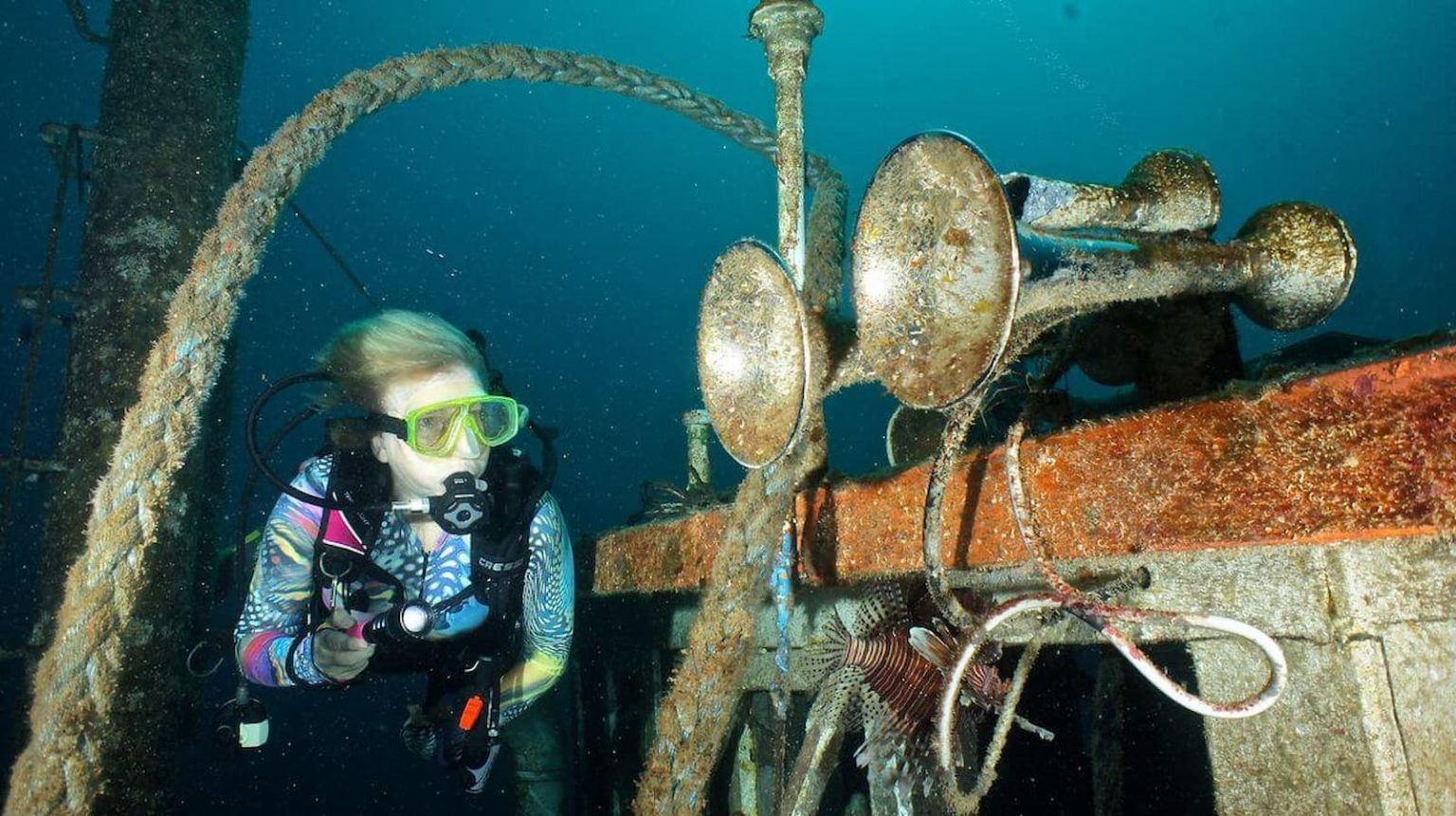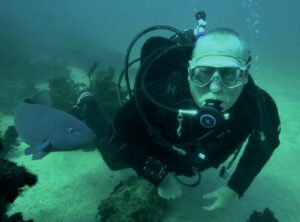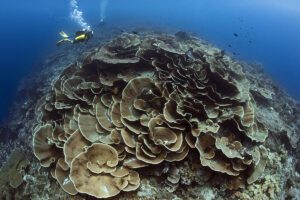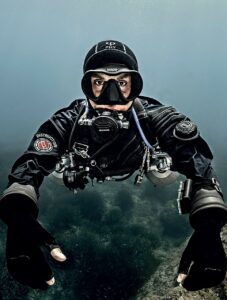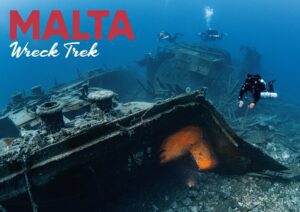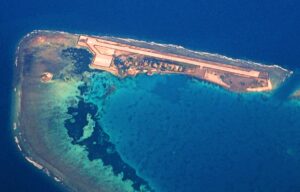There are few countries globally that can compete with Grenada and Carriacou when it comes to shipwrecks, never mind just in the Caribbean, and even more incredibly, many of the sunken vessels were genuine maritime accidents, not purpose-sunk artificial reefs.
And because the islands sit near a busy trade route, the number of wrecks is going up all the time – the latest addition was in March last year! This is fantastic news for divers, and whether you are a newly qualified open water diver or a hardcore diving veteran, you will find a multitude of shipwrecks awaiting your visit.
And if you aren’t into your sunken metal (Ed: and why not?), never fear – the sheer amount of marine growth and fish life that lives on and around the wrecks means every dive is a swirling riot of vibrant colour.
Accidental shipwrecks
As said before, due to its location on various shipping routes, Grenada is also blessed with a plethora of shipwrecks that were the result of maritime accidents, and now provide underwater playgrounds for divers and protective habitats for marine life.
The Bianca C
Like many Hollywood starlets of a certain generation, this grand old dame may be starting to show her age, but there is no doubting the fact that she still commands respect and remains an alluring attraction for experienced divers visiting Grenada. One of the largest diveable shipwrecks in the world, the Bianca C’s vital statistics are mightily impressive – 181 metres long, 23 metres wide, 18,427 tonnes. That is one big lump of metal.
This immense Italian liner has been a fixture on the Grenada diving scene since she sank in 1961, but delve into her history, and you find that she actually sank twice!
The Bianca C was built in 1939 on the south coast of France, and then after being launched as an incomplete ship named Marechal Petain, was first sunk by German forces in August 1944. The submerged hull was raised in 1946 and taken back to its original shipyard, where it was extensively refitted and launched once again, in 1949, this time as a luxurious cruise ship bearing the name La Marseillaise.
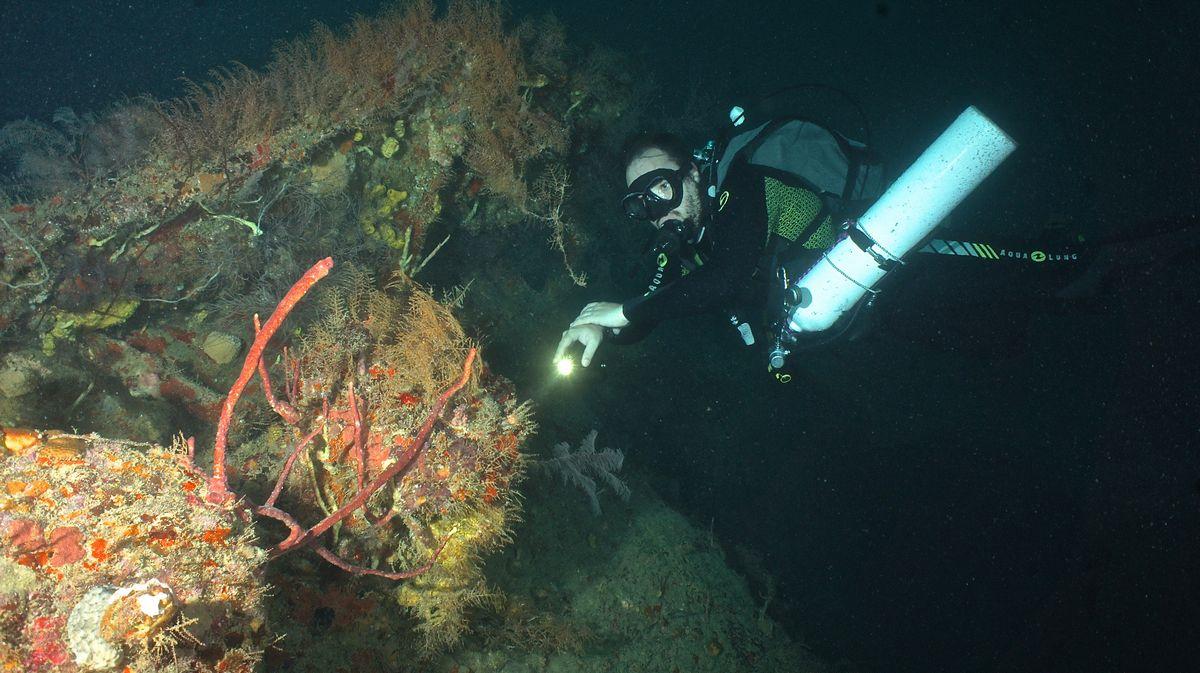
She then became known as the Arosa Sky in 1957 after being sold, before finally, in 1959. she was bought by the G Costa du Genoa company, and was subsequently renamed Bianca C after a daughter in the family firm. She was tasked with the run from Naples, Italy, to Guaira in Venezuela, and Grenada was her last stop on the return leg.
On 22 October 1961, while anchored off St Georges, an explosion in the boiler room saw the vessel catch fire. Hordes of local boats – ranging from sailing boats, power boats and tiny dinghies to ocean-going yachts and inter-island trading schooners, even rowing boats – responded to the crisis, rescuing all but one person who perished on board. Sadly, of 12 badly burned crew, two other men died later. Showing the friendliness and generosity that Grenada is renowned for, all of the rescued passengers were given food and shelter in hotels, guest houses and even private homes.
British frigate HMS Londonderry was in Puerto Rico and sailed down to Grenada to assist. When the naval vessel arrived on 24 October, the Bianca C was still ablaze, boiling the sea around her glowing stern. The frigate managed to take the huge liner in tow, with an aim to move it away from the shipping lanes, but it proved problematic due to the Bianca C’s rudders being jammed and eventually the towing line snapped and the ship sank, which is how it came to rest upright in some 50m of water off Pink Gin Beach.
I first dived her many years ago in 1999, and back then, apart from some sections of the main superstructure that had partially collapsed, she was still very much ‘shipshape’. The swimming pool – this was a luxury cruise liner, after all! – was immediately recognisable, with its blue and white tiled bottom and sides clearly visible, and it was relatively easy (if you had the correct training and skill-set) to venture inside and check out some of the cabins and social areas.
As the current predominantly runs from stern to bow, on each dive, we descended rapidly to the elegantly curved stern, took a quick ‘dip’ in the pool and then began to drift with the flow along the main deck level. We perused various sections of the superstructure as we floated effortlessly, before finally clearing the dominant bridge and gliding over the gigantic bow.
As the current whipped us off the wreck and into blue water – you eventually pick up Whibble Reef and can then make your way steadily shallower to end your dive – I recall everyone always turning around to watch the bow slowly disappear into the gloom. Save for the fact there were no railings on the Bianca C’s bow, it was very reminiscent of images of the Titanic, and probably accounts partly for its nickname of ‘Titanic of the Caribbean’.
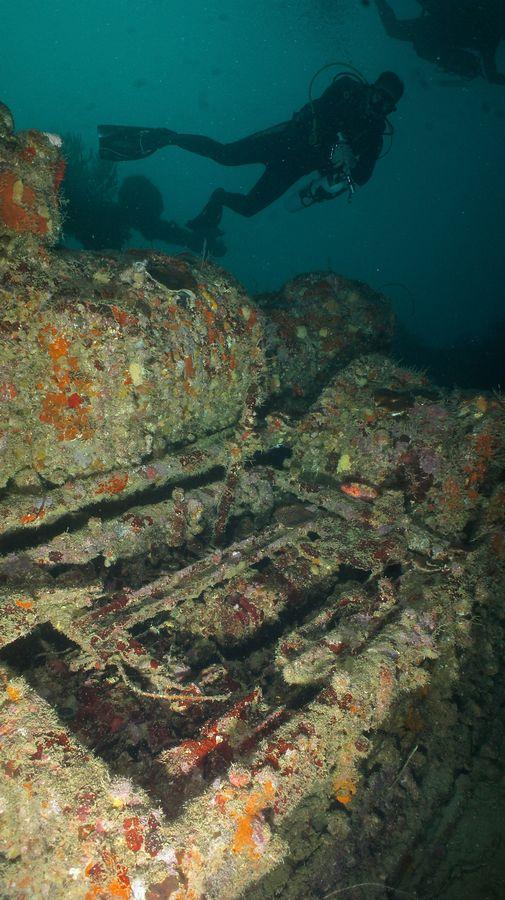
I then dived her several more times through the 2000s, and each time noticed she had succumbed to her watery grave a little more, with her superstructure becoming increasingly unstable. Her slow but steady demise was evident in the ‘rust cloud’ she generated that was flushed into the water column by the current, dropping the visibility while on the wreck itself, but somewhat adding to the whole experience.
My most-recent visit to the Bianca C was last year, after a hiatus of several years, and I saw a vast difference. Most of her starboard side has collapsed down and out on to the seabed, and her huge masts have toppled over. Penetration into the wreck is not advisable anymore given its state of decay, but that isn’t to say there is not plenty still to see. The swimming pool can still be explored, though there is not that much tiling left, and there are swim-throughs and overhangs to venture in and under.
British divers who are used to seeing wrecks broken apart, smothered in silt and rust and in less-than-perfect vis, will relish diving on the Bianca C, as their honed eyes will be able to easily pick out key aspects of the ship, including bollards, winches, parts of the superstructure and the bow chain and rope locker. That monstrous bow is still just as impressive as it was when I first saw it back in 1999, so remember to turn round and soak up the view as you leave the ship.
As an alternative dive to the tradition stern-to-bow drift, tech divers can also drop on to the wreck near the bridge and then head over the side of the ship’s bow to the seabed some 20m below. At 50m-52m, a short distance from the bottom of the bow, you can find a vast anchor lying on the bottom, its huge forks protruding upwards. If you have a wide-angle lenses – and the vis allows – it makes a seriously impressive photograph to put the anchor in the foreground and have the bow looming in the background. Having a diver silhouetted next to the bow only adds to the drama.
So, spending 55 years on the seabed has taken its toll on the old girl, but there is no taking away from the epic scale of this enormous vessel, and she still makes a fine flagship for the rest of Grenada and Carriacou’s sunken fleet.
The Shakem
This 50-metre freighter was carrying much-needed bags of cement for the building industry on Grenada when she was caught in a fierce storm in May 2001. The heavy cargo shifted and she went down, settling upright in 32m. The remnants of the bags of cement can clearly be seen in the holds – the cement has set, and the bags have long since disintegrated, leaving giant ‘pillows’ stacked nearly in piles – but her real draw is the rich smothering of coral and sponge growth that seems to cover every square inch of her hull, superstructure and especially the large crane lying amidships. This is liberally covered in gorgonian sea fans, while the rear of the ship almost looks like a fluffy white wall dive due to the thick coating of coral.
I first dived the Shakem in 2002, so she hadn’t been down that long, yet I recall being astounded by the amount of coral and sponge growth that had accumulated on her in less than 12 months. It is testament to how nutrient-rich the waters are that surround these islands, just how quickly and profusely encrusting marine life can take hold and flourish. Now the wreck is, in parts, almost unrecognisable as being a manmade object, such is the density of the coral and sponge growth.
The Veronica L
Smaller than the Shakem at a length of 40 metres, the Veronica L was also a freighter. She sank after springing a leak, but was then raised and moved to a location near Grand Anse after work began on the cruise ship dock. Now lying upright in 15m, she is a perfect wreck dive for all levels – even snorkellers can enjoy her if the vis is good – and like the Shakem is adorned in marine growth and inhabited by shoals of fish.
If you want to get a little more depth, you can even follow anchor chains off the stern down to a small drop-off at a depth of 30m, and for experienced divers, this is actually not a bad idea. Drop on to the wreck off the dive boat and immediately head off to the drop-off. Spend a little time exploring this area, which is rich in marine life, and then return to the wreck itself to complete the rest of your dive. Due to its small size and shallow location, the Veronica L is also popular with underwater photographers, as the light is good and it is easy to cover the entirety of the wreck several times during a single dive.
The King Mitch
The Atlantic side of Grenada – which is often rougher, with large swells, but also benefits from having tremendous visibility – is home to several world-class shipwrecks, and one of the best is the King Mitch.
Originally a US Navy minesweeper from World War Two, she was retro-fitted into a freighter by having two cargo holds inserted in her middle, with a crane attached to the deck between them. She is a very strange-looking wreck – to all intents and purposes, she resembles a box with a pointed front!
She lies several miles offshore on her side in 32m, after sinking in 1981 when her bilge pump failed. There is some coral growth on her, but as the wrecks on this side of the island are often swept by sometimes fierce currents, it is nowhere near as prolific and dense as on the Caribbean side. What it does have is nurse sharks – lots of them – and southern stingrays, not to mention patrolling barracuda and amberjack, so it is this pelagic action that draws divers to the King Mitch, rather than the wreck itself. But don’t overlook the vessel, which is still intriguing to explore.
The Hema I
Also on the Atlantis side, but a little closer to land, is the cargo vessel Hema I. Like the Shakem, she was carrying cement, but had actually delivered her consignment to the island and was enroute back to Trinidad on 1 March 2005 when she suffered a failed bilge pump and ended up in 30m of water. Not long after being sunk, she was broken apart by severe hurricane surge, and now the hull and bow lie on their port side, with the midships well-flattened. This wreck is another haunt for nurse sharks, which swarm in large numbers under hull plates and near the bow, and reef sharks sometimes pay a fleeting visit from out of the blue. More photo-friendly than the King Mitch, the Hema I offers much for underwater snappers.
Yes, the sharks are a huge attraction, and you can get very close to them if you are patient and take your time, but make sure to turn some of your attention to the wreck, which has a few extremely picturesque areas. Remember to take a peek down through an open porthole on the rear superstructure – a massive turtle obviously made its way inside at some time in the past and then tragically couldn’t find its way out, and now its remains lie clearly visible inside the Hema I.
The Persia II
The latest vessel to join Grenada’s underwater fleet on the Atlantic side is this cargo ship, which went down in 35m in March last year. Coral growth is fairly sparse at the moment, as you would imagine, but algae has already taken a hold, and marine life has started to move in, with various reef fish and the invasive lion fish in residence. Being some eight miles offshore means currents can be strong, and she lies close to deep water, so only time will tell what will eventually call her home, but in the meantime, divers can enjoy seeing a ship in the early stages of being claimed by the sea.
It is always quite eerie diving a wreck that has only been down a short time, and when I dived it, it had been down a matter of months. The bridge was still full of all the usual bells and whistles, including the ship’s wheel and throttle controls, and you could pull open the drawers in the units, etc. The ship’s horns were still shiny chrome, albeit with a light smattering of algal growth, and there were thick ropes floating up into the water all over the vessel. It will be interesting making a return visit in a few years to see how much the marine life has claimed the Persia II for the sea.
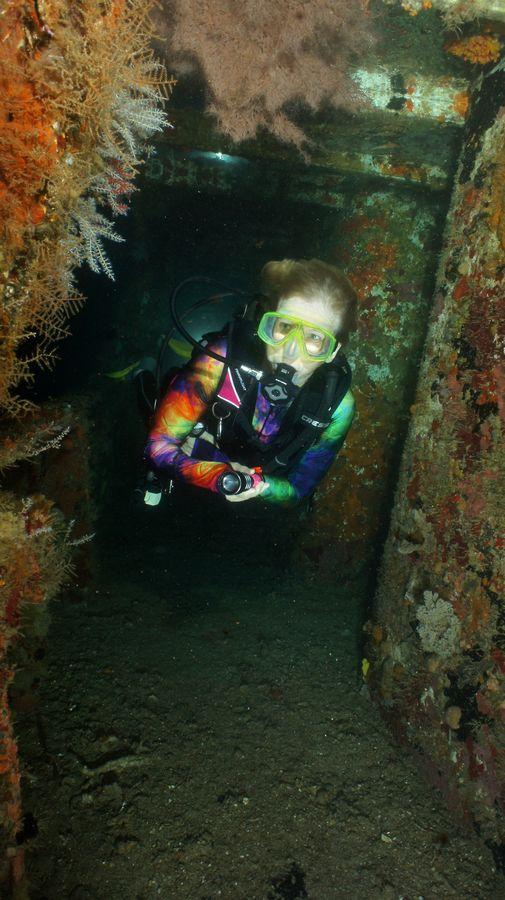
Artificial reefs
Not that they necessarily need it with such a selection of genuine shipwrecks, but Grenada and Carriacou also boast several artificial reefs – and more are in the pipeline.
The Buccaneer
This sloop was sunk for divers way back in 1978, and now lies on its starboard side in just 24m. As you can imagine, having been on the seabed for the best part of 40 years, it is absolutely festooned with marine growth. She is only small, but home to plenty of fish life, and her compact nature makes her perfect for a spot of underwater photography.
The MV Hildur
This cargo vessel has been on the bottom since 2007, and lies in Grand Mal Bay in 35m, meaning she is one for experienced divers. Like the shallower Buccaneer, she has collected a thick layer of encrusting coral and sponge growth, despite only been down for a quarter of the time, further testament to the nutrient-rich waters around the islands. Her large open holds provide the perfect environment for shoals of fish. Spadefish and barracuda often swim in the water above her.
The Twin Tugs
On Carriacou near Mabouya Island, you have the Twin Tugs, two vessels sitting upright within a short distance of one another in 28-30m, though for a thorough exploration of both, they are best visited individually due to the depth. Both are around 30 metres in length – the Westsider was sent to the bottom on 4 September 2004, and the Boris followed on 10 September 2007.
The two wrecks are covered in vibrant red and orange encrusting corals and algaes, and penetration into the interior is possible on both. The vast engine rooms are definitely worth checking out if you are suitably trained for overhead environments. Currents can sometimes sweep across them, and they are home to angelfish, wrasse, soldierfish, lobster and moray eels.
Conclusion
If you are into your sunken metal, it is hard to avoid factoring Grenada and Carriacou into your ‘must-dive’ bucket list. The sheer number of shipwrecks, genuine and artificial, is mind-blowing, and you could happily fill two weeks sating your ‘lust for rust’. The Bianca C is well worth a few dives, as on the first one you will just be blown away by the size of the thing, and the Atlantic wrecks are great for blending bigger marine life with submerged metal, but don’t dismiss the shallower wrecks on the other side of the island – they are smothered in marine growth and home to a multitude of fish. Each wreck has its own attractions, and together they all combine to make up a fleet of monumental proportions.
Click here to read the full Scuba Diver Destination Guide to Grenada
